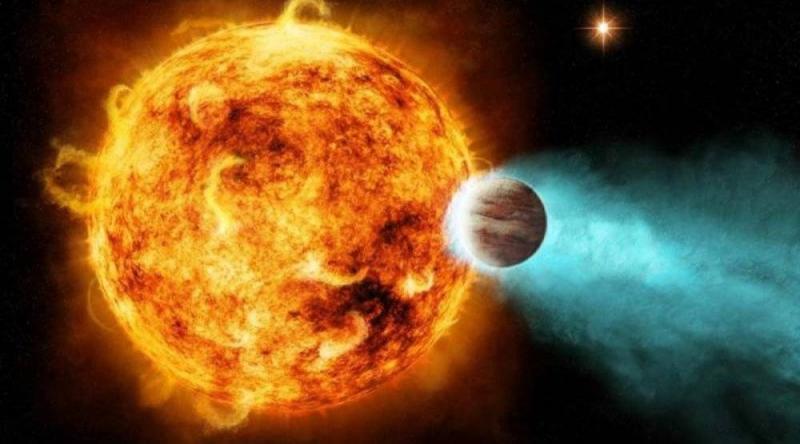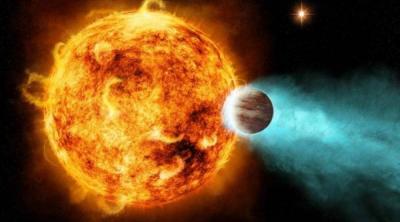An international team of astronomers has announced the discovery of a new exoplanet of the "hot Jupiter" type orbiting a fast-rotating F-type star. The newly discovered alien world, named TOI-4641 b, may be four times larger than Jupiter in our solar system. Generally, "hot Jupiters" are classified as giant gas planets with orbital periods ranging from 10 to 200 days. This makes them challenging targets for detection via the transit method (a photometric technique used to search for exoplanets) and follow-up radial velocity studies.
Now, a group of astronomers led by Allison Pereira from the Harvard Smithsonian Center for Astrophysics (CfA) has found a new exoplanet of the "hot Jupiter" category. Using NASA’s Transiting Exoplanet Survey Satellite (TESS), which surveys the entire sky for transits of worlds beyond our solar system, astronomers identified a transit signal in the light curve of TOI-4641, a bright and fast-rotating F-type star with a rotation speed of approximately 86.3 km/s. The planetary nature of this signal was confirmed through photometric and spectroscopic follow-up observations.
According to a research paper published in the arXiv journal, the radius of the newly discovered planet is about 0.73 times that of Jupiter, and its maximum mass is calculated to be 3.87 times that of Jupiter. The host star, TOI-4641 (also known as TIC 436873727), is located roughly 286 light-years away and has a radius of about 1.72 solar radii, making it approximately 41% larger than our Sun. The star is estimated to be 2.69 billion years old, with metal content at a level of -0.09, and its effective temperature is found to be 6560 Kelvin (6286 degrees Celsius).
Scientists confirmed that "long-period exoplanets like TOI-4641 b can be crucial for testing the mechanisms that drive primordial misalignment in planetary systems, given that at such orbital distances, tidal interactions between the star and the planet are presumed to be too weak to modify the orbital inclination." The scientists concluded that "testing these predictions stimulates the complete characterization of planets in long-period orbits around early-type stars." Overall, the Pereira team suggests some mechanisms behind this misalignment, including chaotic accretion, magnetic twisting, changes in the spin axes of early stars, and the presence of companion stars or planets during the primordial formation phase.




